Note: The following texts are amalgams consisting of bits of news articles, biographies, and information from a number of different sources.
—-
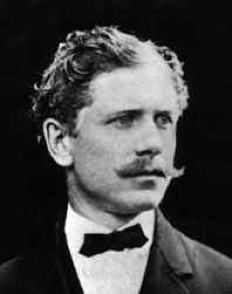 Ambrose Bierce’s short stories are held among the best of the 19th century, providing a popular following based on his roots. He wrote realistically of the terrible things he had seen in the war in such stories as “An Occurrence at Owl Creek Bridge”, “Killed at Resaca”, and “Chickamauga”. Bierce was considered a master of “Pure” English by his contemporaries, and virtually everything that came from his pen was notable for its judicious wording and economy of style. He wrote in a variety of literary genres. One of Bierce’s most famous works is his much-quoted book, The Devil’s Dictionary, originally an occasional newspaper item which was first published in book form in 1906 as The Cynic’s Word Book. It consists of satirical definitions of English words which lampoon cant and political double-talk.
Ambrose Bierce’s short stories are held among the best of the 19th century, providing a popular following based on his roots. He wrote realistically of the terrible things he had seen in the war in such stories as “An Occurrence at Owl Creek Bridge”, “Killed at Resaca”, and “Chickamauga”. Bierce was considered a master of “Pure” English by his contemporaries, and virtually everything that came from his pen was notable for its judicious wording and economy of style. He wrote in a variety of literary genres. One of Bierce’s most famous works is his much-quoted book, The Devil’s Dictionary, originally an occasional newspaper item which was first published in book form in 1906 as The Cynic’s Word Book. It consists of satirical definitions of English words which lampoon cant and political double-talk.
In October 1913, the septuagenarian Bierce departed Washington, D.C., for a tour of his old Civil War battlefields. In Ciudad Juárez he joined Pancho Villa’s army as an observer, and in that role participated in the battle of Tierra Blanca. Bierce is known to have accompanied Villa’s army as far as the city of Chihuahua. After a last letter to a close friend, sent from there December 26, 1913, he vanished without a trace, becoming one of the most famous disappearances in American literary history. Several writers have speculated that he headed north to the Grand Canyon, found a remote spot there and shot himself, though no evidence exists to support this view. By one account, Villa tacitly acknowledged that two of his men shot Bierce to keep him from revealing their position, and disposed of his body. All investigations into his fate have proved fruitless, and despite an abundance of theories his end remains shrouded in mystery.
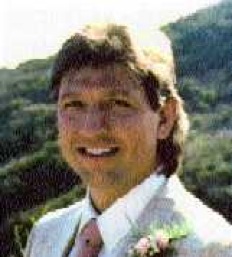 Philip Taylor Kramer played in a number of bands in Ohio (including Max, with future Dead Boy Stiv Bators) before moving to L.A. in the early ’70s. After working a number of odd jobs and even living on the streets, he was asked to join an Iron Butterfly reunion by original drummer and friend Ron Bushy, whom he’d been working with as a prop builder at Warner Brothers Studios. Along with guitarist Erik Braunn and keyboardist Howard Reitzes, they recorded Scorching Beauty for MCA in 1974, followed by Sun And Steel (with Bill DeMartines replacing Reitzes). Neither album was particularly good, and while the band toured based on the strength of the name (with Kramer singing “In a Gadda Da Vida”), the band folded in 1977. Kramer and Bushy formed a post-Butterfly group called Gold and recorded an unreleased album during ’78-’79. After that stint Kramer quit the music business altogether.
Philip Taylor Kramer played in a number of bands in Ohio (including Max, with future Dead Boy Stiv Bators) before moving to L.A. in the early ’70s. After working a number of odd jobs and even living on the streets, he was asked to join an Iron Butterfly reunion by original drummer and friend Ron Bushy, whom he’d been working with as a prop builder at Warner Brothers Studios. Along with guitarist Erik Braunn and keyboardist Howard Reitzes, they recorded Scorching Beauty for MCA in 1974, followed by Sun And Steel (with Bill DeMartines replacing Reitzes). Neither album was particularly good, and while the band toured based on the strength of the name (with Kramer singing “In a Gadda Da Vida”), the band folded in 1977. Kramer and Bushy formed a post-Butterfly group called Gold and recorded an unreleased album during ’78-’79. After that stint Kramer quit the music business altogether.
Kramer immersed himself in schooling, studying engineering and getting a job building radar equipment. He graduated from night school with straight A’s and got a job at Northrup, working on the design of the MX missile. At the time of his disappearance, he had reportedly discovered a mathematical formula that would allow matter to travel faster than the speed of light. His involvement in projects of this nature have led to theories that he was abducted or murdered.
In the months leading up to his disappearance, Kramer began to have what family and close associates describe as a serious mental breakdown. He became transfixed with the popular book the Celestine Prophesy and obsessed with finding a connection between the book, his work at Northrup, and radical theories about harnessing gravity. He suffered severe mood swings, insisted to his wife that a moat must be created around their house to protect it. He told his father that if he ever said he was going to kill myself, no one should believe it, and instead it would be a message that he’d be needing help. He spoke more and more of an approaching Apocalypse, that he was speaking with God, and that he had channeled an additional 10th insight to the Celestine Prophesy.
What is known is that on Feb. 12, 1995, having spent an hour waiting at Los Angeles International Airport for a business contact who never arrived, he called both his wife and Ron Bushy from his cell phone in his car, leaving Bushy a cryptic message about seeing him “…on the other side.” According to newspaper reports, Kramer also called 911 just before noon that day and said he was going to commit suicide, although his friends, family, and co-workers who’ve listened to the 911 tape say it is full of irregularities and uncharacteristic behavior. In any case, Kramer disappeared without a trace until 1999 when a wrecked car was found in a Malibu ravine and the skeletal remains of its driver identified as Kramer’s.
The 911 tape:
Dispatcher: “911 can I help you?”
Kramer: “Yes this is Philip Taylor Kramer.”
Dispatcher: “Uh huh, this is 911, Can I help you, sir?”
Kramer: “Yes you can. I’m going to kill myself. And I want everyone to know that O.J. Simpson is innocent … They did it.”
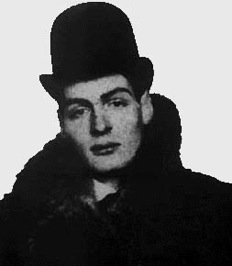 Arthur Cravan was born and educated in Lausanne, Switzerland, then at an English military academy from which he was expelled after spanking a teacher. After this he travelled widely throughout Europe and America during World War I using a variety of passports and documents, some of them forged. He declared no single nationality and claimed instead to be “a citizen of 20 countries”. Settling in Paris, Craven became France’s heavyweight boxing champion without having to fight a single match. His reputation as a professional boxer in itself provided a sort of street-credibility to his Dadaist reputation, but his rough vibrant poetry, and provocative, anarchistic lectures and public appearances (which often degenerated into drunken brawls) also earned him the admiration of Marcel Duchamp, Francis Picabia, André Breton, and other artists and intellectuals.
Arthur Cravan was born and educated in Lausanne, Switzerland, then at an English military academy from which he was expelled after spanking a teacher. After this he travelled widely throughout Europe and America during World War I using a variety of passports and documents, some of them forged. He declared no single nationality and claimed instead to be “a citizen of 20 countries”. Settling in Paris, Craven became France’s heavyweight boxing champion without having to fight a single match. His reputation as a professional boxer in itself provided a sort of street-credibility to his Dadaist reputation, but his rough vibrant poetry, and provocative, anarchistic lectures and public appearances (which often degenerated into drunken brawls) also earned him the admiration of Marcel Duchamp, Francis Picabia, André Breton, and other artists and intellectuals.
His personal style involved a continual re-invention of his public persona and various outrageous statements and boasts. His pride to be the nephew of Oscar Wilde even produced hoaxes – documents and poems – Cravan wrote and then signed “Oscar Wilde”. In 1913 he published an article in his self-edited paper Maintenant, claiming that his uncle was still alive and had visited him in Paris. This rumour was taken up even by the New York Times. In fact, the two of them never met.
In 1914 he fled to New York to avoid fighting in the war, and then to South America three years later for the same reason. In Mexico City he met his future wife, the poet Mina Loy. After their marriage in 1918 they planned a trip from Mexico to Venezuela. Without enough money for both of them to book passage on a ship, Loy took the trip on a ship and Cravan set out alone on a sailboat to Venezuela. Cravan never arrived, and intermittent and unconfirmed reports of his sighting continued for many years. One report has it he changed his name to B. Traven and assumed the identity of a reclusive author of German-American nationality who wrote The Treasure of the Sierra Madre. Another has it that he returned to New York and then Paris, took the name Dorian Hope, a vagrant poet who sold forged Oscar Wilde manuscripts in the early 1920s.
 Everett Ruess was an artist and writer who explored the deserts of the American southwest, invariably alone. He was known for cutting linoleum prints of nature and associated with Ansel Adams and Dorothea Lange. His prints show scenes from the Monterey Bay coast, the northern California coast near Tomales Bay, the Sierra Nevada, Utah, and Arizona. At the time that Ruess explored the remote canyons of the Southwestern United States, aside from Native Americans, Mormon pioneers and local cowboys, he was likely among the first “outsiders” to venture so deeply and completely into what was then (and to some extent still is) largely an unknown wilderness.
Everett Ruess was an artist and writer who explored the deserts of the American southwest, invariably alone. He was known for cutting linoleum prints of nature and associated with Ansel Adams and Dorothea Lange. His prints show scenes from the Monterey Bay coast, the northern California coast near Tomales Bay, the Sierra Nevada, Utah, and Arizona. At the time that Ruess explored the remote canyons of the Southwestern United States, aside from Native Americans, Mormon pioneers and local cowboys, he was likely among the first “outsiders” to venture so deeply and completely into what was then (and to some extent still is) largely an unknown wilderness.
At the age of 20, he went into the Utah desert with two burros and never returned. The horse corral he made at his camp in Davis Gulch, a canyon of the Escalante was the only trace he left, and remains to this day. Some suspect he accidentally killed himself by falling off a cliff or drowning, whereas others think he was murdered, which is a theory that may be confirmed by recent evidence. Still others believe he crossed the Colorado River to the Navajo Reservation in Arizona and married a Navajo woman. In any case, his statements on life and adventure, combined with his unsolved disappearance, have led to a kind of legendary status. Famously, his last known words were, ‘When I go, I leave no trace.’ His story, along with that of Christopher McCandless, was told in Jon Krakauer’s book Into the Wild and the film of the same name.
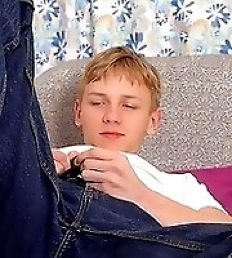 Dima (real name Dimitry Marakov) was born in 1986 in the town of Nalchik, Russia. From a young age, he dreamed of working in the fashion industry as a designer. Lacking the moral or financial support of his parents, he actively sought out contacts within the industry through the internet. At the age of 14, he became acquainted with a successful fashion photographer in St. Petersburg who invited the boy to come live with him and work as his assistant. Dima accepted the offer and moved in with the photographer. According to friends of Dima, he became the older man’s lover for approximately the next year. He eventually grew dissatisfied with the lack of benefits he had been promised would result from the arrangement. He left the photographer to become live-in lovers with a wealthy man who provided the financial backing for a conglomerate of pornographic gay websites. It was at this point that Dimitry adopted the stage name Dima and, with the help of false documents that corrected his age to the legal 18, began a successful career modeling naked and starring in hardcore sex videos on the gay websites financed by his lover.
Dima (real name Dimitry Marakov) was born in 1986 in the town of Nalchik, Russia. From a young age, he dreamed of working in the fashion industry as a designer. Lacking the moral or financial support of his parents, he actively sought out contacts within the industry through the internet. At the age of 14, he became acquainted with a successful fashion photographer in St. Petersburg who invited the boy to come live with him and work as his assistant. Dima accepted the offer and moved in with the photographer. According to friends of Dima, he became the older man’s lover for approximately the next year. He eventually grew dissatisfied with the lack of benefits he had been promised would result from the arrangement. He left the photographer to become live-in lovers with a wealthy man who provided the financial backing for a conglomerate of pornographic gay websites. It was at this point that Dimitry adopted the stage name Dima and, with the help of false documents that corrected his age to the legal 18, began a successful career modeling naked and starring in hardcore sex videos on the gay websites financed by his lover.
Between the age of 15 and 18, Dima was a highly sought after pornographic model and performer. He saved the money he made from modeling to pay for the tuition at a leading college of fashion that he hoped to attend when he reached 18. At a certain point, Dima began supplementing his income by renting himself out as an escort within his lover’s circle of associates and acquaintances. According to friends of Dima, they included several leading figures in the entertainment industry as well as one of the most powerful men in Russia’s world of organized crime. Dima began to express concern to his friends that the organized crime figure had become obsessed with him, but he refused to accept their advice to stop seeing the man because of the large amount of money these dates were earning him. Sometime in 2005, Dima abruptly left his lover, gave up his modeling career, cut off all communication with his friends, and moved in with the organized crime figure. The last public Dima sighting was late that year when his friend Ignat Lebedev, who was also working as a male escort at the time, accompanied a client to a private sex club where he claims to have witnessed a very thin and confused looking Dima being forcibly sodomized by a group of perhaps ten to fifteen men. Lebedev claims his client identified one of the men as the organized crime figure and dissuaded him from speaking to Dima for his own protection.
Lebedev claims he described what he’d seen to Dima’s former lover and was told Dima had been killed the previous week and that he shouldn’t speak of this again. Lebedev reported both incidents to the police, but after interviewing the lover and being told Lebedev had made the story up, they declined to investigate the matter. In 2006, Lebedev persuaded a prominent Russian gay journalist to write an article on Dima’s disappearance, but during the course of investigating the story, the writer was abducted by unknown assailants, beaten, and told he would be murdered if he wrote the story. Dima has not been seen or reliably heard from in three years, although in early 2007 another organized crime figure, Evgeny Ershova, who was awaiting trial on an unrelated murder charge, claimed that in late 2005 he witnessed a young male prostitute matching Dima’s description be pushed out of a helicopter over a remote forest in the north of Russia. Before Dima’s ex-lover died of lung cancer in late 2007, he reportedly confessed to friends that Dima was sold as a sex slave to a man in the Ukraine in late 2005 and had lived until late 2006 when he’d committed suicide.
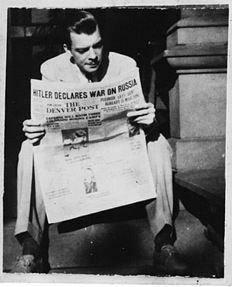 Weldon Kees’ first book of poems, The Last Man, was published in 1943 to great critical acclaim. His circle of friends included Edmund Wilson, Allen Tate, Horace Gregory, Dwight MacDonald, and Philip Rahv, and his writing began to appear in a variety of publications, Time, the New York Times, the New Republic, and Partisan Review. Around this time, Kees stopped writing fiction. His new interest was painting, in which he developed skill with remarkable speed. Soon he was exhibiting alongside abstract expressionists Willem de Kooning and Hans Hofmann, and when Clement Greenberg left vacant the post of art critic for The Nation in 1949, Kees was recommended to take his place. The Peridot gallery twice presented Kees in a one-man exhibition, and one of his pictures was included in the 1950 Whitney Biennial.
Weldon Kees’ first book of poems, The Last Man, was published in 1943 to great critical acclaim. His circle of friends included Edmund Wilson, Allen Tate, Horace Gregory, Dwight MacDonald, and Philip Rahv, and his writing began to appear in a variety of publications, Time, the New York Times, the New Republic, and Partisan Review. Around this time, Kees stopped writing fiction. His new interest was painting, in which he developed skill with remarkable speed. Soon he was exhibiting alongside abstract expressionists Willem de Kooning and Hans Hofmann, and when Clement Greenberg left vacant the post of art critic for The Nation in 1949, Kees was recommended to take his place. The Peridot gallery twice presented Kees in a one-man exhibition, and one of his pictures was included in the 1950 Whitney Biennial.
Though remarkably successful in Manhattan, Kees was dissatisfied with life in New York and decided to relocate to the West Coast in 1950. While continuing to paint and write poetry, he now developed an interest in traditional New Orleans style jazz and song-writing. He played the piano with professional jazz groups and peddled songs and lyrics to publishers. He worked as a photographer with Jurgen Ruesch and Gregory Bateson for various projects they were developing for the Langley Porter Clinic at Berkeley. With Ruesch, he shared the authorship of Nonverbal Communication: Notes on the Visual Perception of Human Relations (1953), which can best be described as a proto-semiotic text that suggests a taxonomy by which to “read” visual signs and gestures that take their place as part of a network of culture. He began making experimental films, writing the music for short films made by other filmmakers, and got involved with the Beat scene.
On July 19, 1955, Kees’s Plymouth Savoy was found on the north side of the Golden Gate Bridge with the keys in the ignition. He had told a friend that he wanted, like Hart Crane, to start a new life in Mexico. When his friends went to search his apartment, all they found were the cat he had named Lonesome and a pair of red socks in the sink. His sleeping bag and savings account book were missing. He left no note. No one is sure if Weldon Kees jumped off the Golden Gate Bridge that day or if he went to Mexico, although suicide is presumed. Before he disappeared, Kees quoted Rilke to friend Michael Grieg, ominously saying that sometimes a person needs to change his life completely.
 Bas Jan Ader was born to idealistic ministers in the Dutch Reformed Church on April 19, 1942. His father was executed by the Nazis for harboring Jewish refugees when Ader was only two years old. A rebellious student, he failed art school at the Rietveld Academy, where friend Ger van Elk recalls that he would use a single piece of paper for the entire semester, erasing his drawings as soon as they were finished. At the age of 19 he hitchhiked to Morocco, where he signed on as a deckhand on a yacht heading for America.
Bas Jan Ader was born to idealistic ministers in the Dutch Reformed Church on April 19, 1942. His father was executed by the Nazis for harboring Jewish refugees when Ader was only two years old. A rebellious student, he failed art school at the Rietveld Academy, where friend Ger van Elk recalls that he would use a single piece of paper for the entire semester, erasing his drawings as soon as they were finished. At the age of 19 he hitchhiked to Morocco, where he signed on as a deckhand on a yacht heading for America.
The yacht shipwrecked off the coast of California, and Ader stayed in Los Angeles where he enrolled at Otis Art Institute. There he met Mary Sue Andersen, the daughter of the director of the school. They married in Las Vegas, where he used a set of crutches to symbolically prop himself up during the ceremony. Ader then taught art and studied philosophy at Claremont Graduate School. In 1970 he entered the most productive period of his career, beginning with his first fall film, which showed him seated on a chair, tumbling from the roof of his two-story house in the Inland Empire.
Ader’s most popular work is his 1970 short film piece entitled “I’m too sad to tell you” that consists of the artist crying in front of a camera after a brief title. While much has been said about the aesthetic and ironical framework of “I’m too sad to tell you”, i.e. the emotive or theatrical content, the slapstick comedy present in much of his work also plays an important role. Within this duality Ader thus creates in much of his work and performance a contrived theatricality that creates comedic space in its meta-awareness. This places not only content and aesthetics to the fore, but the idea of reception as well. The interests and concerns in Ader’s oeuvre locate him in similar art historical tropes of conceptual and performance artists of the 1970s, such as Chris Burden and Bruce Nauman.
In 1975 Ader embarked on what he called “a very long sailing trip.” The voyage was to be the middle part of a triptych called “In Search of the Miraculous,” a daring attempt to cross the Atlantic in a 12½ foot sailboat. He claimed it would take him 60 days to make the trip, or 90 if he chose not to use the sail. Six months after his departure, his boat was found, half-submerged off the coast of Ireland, but Bas Jan had vanished. The boat was later stolen. Many myths have spread out about Ader’s disappearance at sea, leading to speculations about supposedly lost works resurfacing.
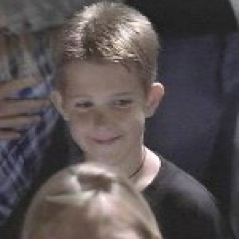 The second-youngest of five children, Joe Pichler relocated to Los Angeles as a child to pursue his acting career. He had some success, most notably appearing in several successful movies including The Fan (1996) and Varsity Blues (1999). With the exception of a handful of memorable supporting roles, he is probably most well-known for his recurring role as Brennan Newton in the third and fourth (direct-to-video) installments of the Beethoven movies — family-oriented comedies about the antics of a mischievous St. Bernard.
The second-youngest of five children, Joe Pichler relocated to Los Angeles as a child to pursue his acting career. He had some success, most notably appearing in several successful movies including The Fan (1996) and Varsity Blues (1999). With the exception of a handful of memorable supporting roles, he is probably most well-known for his recurring role as Brennan Newton in the third and fourth (direct-to-video) installments of the Beethoven movies — family-oriented comedies about the antics of a mischievous St. Bernard.
In 2003, at the insistence of his family, he returned to his hometown of Bremerton, Washington (which is about 16 miles west of Seattle), and graduated from high school there in 2005. According to family, Pichler had planned to return to Los Angeles in the following year (after the braces were removed from his teeth) to continue with his acting career. Pichler was last seen on January 5, 2006. His car was found January 9 at 2006 Wheaton Way at the intersection of Wheaton Way and Sheridan Road. He was reported as officially missing by his family on January 16. Pichler had been playing cards with some friends, who reported he was in good spirits during the evening. According to his family’s reports to the media at the time, the last outgoing call on Pichler’s cell phone was placed at 4:08 a.m. on January 4, to a friend who had said that he had been visiting with Pichler earlier in the day.
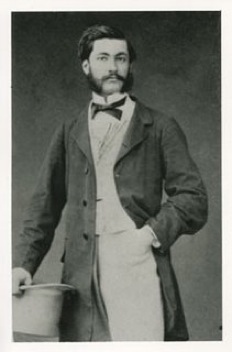 Louis Aimé Augustin Le Prince was an inventor who is considered by many film historians as the true father of motion pictures who shot first moving pictures on paper film using a single lens camera. A Frenchman who also worked in Britain and the United States, Le Prince conducted his ground-breaking work in 1888 in the city of Leeds, West Yorkshire, England. In October 1888, Le Prince filmed moving picture sequences Roundhay Garden Scene and a Leeds Bridge street scene using his single-lens camera and Eastman’s paper film. These were several years before the work of competing inventors such as Thomas Edison and Auguste and Louis Lumière. “Roundhay Garden Scene” is listed by the Guiness Book of Records as the earliest surviving motion picture.
Louis Aimé Augustin Le Prince was an inventor who is considered by many film historians as the true father of motion pictures who shot first moving pictures on paper film using a single lens camera. A Frenchman who also worked in Britain and the United States, Le Prince conducted his ground-breaking work in 1888 in the city of Leeds, West Yorkshire, England. In October 1888, Le Prince filmed moving picture sequences Roundhay Garden Scene and a Leeds Bridge street scene using his single-lens camera and Eastman’s paper film. These were several years before the work of competing inventors such as Thomas Edison and Auguste and Louis Lumière. “Roundhay Garden Scene” is listed by the Guiness Book of Records as the earliest surviving motion picture.
In September 1890, Le Prince boarded a train on a Friday, promising friends he would rejoin them in Paris on the following Monday for the return journey to England, to be followed by a trip to the US to promote his new camera. However, Le Prince did not arrive at the appointed time and he was never seen again by his family or friends. All that could be established about his last whereabouts was that he was seen on on 16 September 1890 boarding the 2:42 train at Dijon for his return to Paris. The French police, Scotland Yard and the family undertook exhaustive searches but never found his body or luggage. This mysterious disappearance case was never solved. However, according to Irénée Dembowski five main theories have been proposed:
1. Missing person (1890): No luggage, nor corpse was found in the Dijon-Paris express nor along the railway. No one saw Le Prince at the Dijon station on September 16, 1890, except his brother. No one saw Le Prince in the Dijon-Paris express after he was seen boarding it. No one noticed strange behaviour or aggression in the Dijon-Paris express. The French police report conclusion: a missing person.
2. Perfect suicide (1890): According to a police report,[citation needed] Louis Le Prince wanted to commit suicide because he was on the verge of bankruptcy. Le Prince had already arranged his suicide and he managed for his own body and belongings never to be found. This theory was reported in 1928, by Georges Potoniée, quoting the son of the architect in Les Origines Du Cinématographe.
3. Patent Wars assassination (1900): Christopher Rawlence pursues the assassination theory, along with other theories, and discusses the Le Prince family’s suspicions of Edison over patents in his 1990 book and documentary The Missing Reel. At the time that he vanished, Le Prince was about to patent his 1889 projector in England and then leave Europe for his scheduled New York official exhibition. His widow assumed foul play, and suspicion has always fallen on Thomas Edison who some scholars continue to believe arranged for La Prince’s murder, though no concrete evidence has ever emerged
4. Disappearance ordered by the family (1966): In 1966, Jacques Deslandes proposed a theory in Histoire comparée du cinéma: “Le Prince’s disappearance was voluntary and was caused by reasons of financial order and familial conveniences”. Journalist Léo Sauvage quotes a note from Pierre Gras, director of the Dijon municipal library, “Le Prince died in Chicago in 1898, voluntary disappearance at the family’s request. Homosexuality.” This statement was made by a famous historian visiting the Dijon library, but kept secret.
5. Fratricide, murder for money (1967): A photograph of a drowning victim from 1890 resembling Le Prince was discovered in 2003 during research in the Paris police archives.
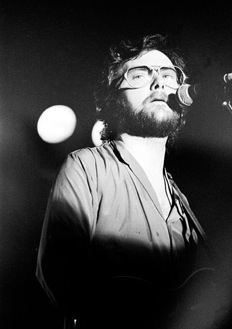 In 1972 Gerry Rafferty and his old school friend Joe Egan formed Stealers Wheel, a group beset by legal wranglings but which did have a huge hit “Stuck in the Middle With You” (made famous for a new generation in the movie Reservoir Dogs) and the smaller top 40 hit “Star” ten months later. The duo disbanded in 1975. In 1978, Gerry Rafferty cut a solo album, City to City, which included the song with which he remains most identified, “Baker Street”. The single reached No. 3 in the UK and No. 2 in the U.S. The album sold over 5.5 million copies, toppling the Saturday Night Fever soundtrack in the U.S. on 8 July 1978.
In 1972 Gerry Rafferty and his old school friend Joe Egan formed Stealers Wheel, a group beset by legal wranglings but which did have a huge hit “Stuck in the Middle With You” (made famous for a new generation in the movie Reservoir Dogs) and the smaller top 40 hit “Star” ten months later. The duo disbanded in 1975. In 1978, Gerry Rafferty cut a solo album, City to City, which included the song with which he remains most identified, “Baker Street”. The single reached No. 3 in the UK and No. 2 in the U.S. The album sold over 5.5 million copies, toppling the Saturday Night Fever soundtrack in the U.S. on 8 July 1978.
In 2006, Gerry Rafferty arrived at Inverness airport after a transatlantic flight after drinking his way through a transatlantic flight so drunk that he had to be taken off the flight in a wheelchair. The friend who had come to meet him was apparently so annoyed at his condition that they refused to help him. And witnesses say he was so drunk none of the airport taxi drivers would accept him as a passenger. Eventually he was left outside the airport offices of the HeliMed air ambulance service. Police were called and agreed to take him to the Beechwood House clinic a few miles away.
Rafferty has been a virtual recluse for more than 20 years. His marriage broke up amid rumours of his increasingly eccentric behaviour and he became embroiled in an extraordinary feud with his elder brother, Jim who has set up a website taunting his brother whom he calls ‘the Great Gutsby’, ‘the Human Bottlebank’ and ‘my psychotic sibling’ and claiming that he is overweight, drink-addled and paranoid.
In the summer of 2008, Rafferty checked himself into St Thomas’ Hospital for liver problems. On August 1st, Rafferty disappeared, leaving his belongings behind. The hospital filed a missing persons report. Despite claims that he has been in contact with family, posted on various websites, as well as claims of sightings (including that he is in London, Bournemouth, Brussels, Bodelwyddan, or North Korea, there has still been no authenticated report regarding his whereabouts.
—-
*
p.s. RIP the great writer Harry Mathews. Today’s post has been reconstituted from my murdered blog at the request of Lord_s. Trivia: The ‘Dima’ section of this post famously inspired the Deerhunter song ‘Helicopter’. ** David Ehrenstein, Hi, D. I first discovered Gert back in the 80s because she was revered by — and greatly influenced — my all-time favorite performance artists Dancenoise. I’d seen her in ‘Juliet of the Spirits’, of course, but I didn’t make the full connection until later. ** Jamie, Hi, Jamie. Thanks, pal. Yeah, osteopaths, right? God’s gift to something. My Wednesday was a bit crazed, but that paid off because we managed to line up two full days (today and tomorrow) of auditions for our film, which is great because yesterday at this time I was almost sure we would have to cancel them. Our fingers are crossed that we’ll encounter a real possibility or more among the prospects today, and your wish of luck will surely help. Yes, these auditions are in Paris. We’ll do another day or two of auditions out in Bas Normandie probably in the next week or week and a half. London! What did you do there? Did you have fun and even more? Returnal love, Dennis. ** Dóra Grőber, Hi! Oh, good, about the interviewees getting lined up. I can especially feel that goodness because after a day yesterday of pretty heavy scrambling, we have salvaged our two days of auditions, which will start shortly and then continue tomorrow. High hopes. I’m very glad to hear your dog is swiftly on the mend. And too about the newness of what you found when writing yesterday! So cool! I think I know that feeling when you feel your talent stretch or expand. It’s one of the best ever feelings. Like I said, yesterday involved just a lot of organizing. I did meet up with Gisele, who says we maybe/ should hear something about the TV series in the next couple of days finally, which would, if the news is good, be a real load of stress off our backs. Have a superb day! What happened? ** Pedantic_Lurker, Hi, welcome! Thanks a lot for coming in! Good eye. Yeah, as far as I could gather, that should be Gert with her back to the camera. I wanted to have a ‘TPO’ still in there, so I took a chance. Great week to you too! Come back anytime or often, if it seems like a thing to do. ** Mark Bringelson, Hi, Mark. It’s very nice to meet you. Thank you so much about the post. And for happening in here. What’s going on with you? ** Steevee, Hi. Say what one wants about NYC, but the access to interesting film and directors/performers in NYC is unparalleled. My thinking is that we join the revolution against Trump, adding/using our talents and strengths, via the counteraction of our art’s particular challenges if we’re artists and/or other strengths and skills if our talents and connections lie elsewhere, and maybe if we stay focused and unstintingly opposed and noisy and forceful enough, it won’t be four more years, or at least not four years where he can steamroll us with his sickness. Fuck knows, though. ** _Black_Acrylic, Hi, Ben. Cool, happy that she interested you. ** B, Hi, man. Good to see you. Yes, I remember about the salon. Best of luck getting everything squared away for that. Exciting. I was only zooming in and out of Boston on my trips, but, yeah, I couldn’t get a bead on that place at all. Great you saw the Parreno. I saw that show here, and it was a blast, yeah. My day turned out okay, thanks. Now the stress is productive, i.e. the stress of the auditioning process, something I’m sure you’re familiar with yourself. Have a swell day! ** Bill, Hi. Yeah, Gert is kind of really something special. Fires at work, shit. That can’t be good. I hope it takes you next to nothing to tamp that shit out. ** H, Hi. Well, I’m doing pretty okay as of this very moment. I’m happy you got to read the ‘Against Nature’ catalog. At the time we did the show, the dominant artistic approach, or rather the approach to the AIDS epidemic that was considered to be a requirement among queer activists, was an agitprop and thoroughly politicized, generalized approach. Richard’s and my show deliberately challenged that by focusing on art by queers who approached the AIDS epidemic in an aestheticized or personal or comedic or abstract or other ways, and the show infuriated a lot of activists — the show’s opening was disrupted by a giant “Die In’ demonstration by Queer Nation, for example — and also critics at the time, most famously and vocally Crimp. I haven’t read his attacking piece on our show in years, so I don’t remember it in detail. I do remember him denouncing Richard and me as bad or objectionable homosexuals. Something like that. It was a different and very intense time, let’s say. ** Right. I hope all or most or some of you enjoy this reborn post, and I will see you tomorrow.




 Now available in North America
Now available in North America 
hi dendaddy, how are you??? great, classic day! i’m at school, sitting in my little studio space. i had a thought for a plan, and you would have a small, but integral part in it, so here it is. i think writing is so painful and hard, but i’m having to do it more and more in school, i have to write at bachelor essay when i get to my third year here, plus if i need grants or apply for exhibitions or anything i’m gonna have to write stuff, so i’ve decided to make a plan to force myself to write regularly. something like a half hour maybe, a few days a week, where i come to school and just write anything. so i was thinking i could come here and ask u for a word, just any old thing, when i need it, and that would be what i write about/around that day. what do you say? there’s nothing in it for you really, except i’ll be here saying hi more often! and i’ll owe you big time. really exciting you’re doing auditions for your film now!! sending luck, hope it goes really well. also crossing fingers n toes for your tv show project. hugz
What a fantastic and interesting blog. It’s scary to know that people can just disappear into thin air (in theory) and never heard from again. I have an old friend who may be in that category, in that if something happens to him, I will never know of it. Or will I? There have been people in my parent’s social circle who disappeared: John Reed and Bobby Driscoll. Both are known in the Semina Culture book. But if memory serves me correctly, it was months after they passed away that we heard anything about them.
On another note, I went to the Women’s March last Saturday, and I had a fantastic time. I never participated in a march before. First of all, everyone was so kind and polite. And it was great seeing Los Angeles so alive – especially people using the public transportation system – subways, trains, and buses. Paris has the culture where people hit the streets. In Los Angeles, it happens, but never in such a grand style. Saturday was a good day. I hope to see more good days in the near future.
Hi!
Thank you for reviving today’s post! Richey Edwards could also be a sad addition to this list. Now I’m off to listen to Helicopter!
Oh, I’m so glad you managed to start the auditions!! What’s your opinion so far? How’s it going?
I totally agree with that! I’ve written a lot today, I’m still in this inspired mood. It’s rare, feeling like this for two days in a row but obviously it’s very welcome! Other than this, I met a close friend of mine and it was really nice. So it’s a good day for me.
I hope you hear back about the TV series very soon!! Please do tell me when it happens!
And I also hope you had a fantastic and fruitful day!!
Gentrification and the Internet have destroyed New York’s record and (to a slightly lesser extent) book stores, but film culture still thrives here. I hope it can keep going.
I watched a half hour interview with Forest Whitaker on the BBC last night. It was benign and positive. I planned to watch the following newscast, but when they ran down the headlines, one of them was “Trump says ‘torture works.’ ” I was hit by a wave of disgust and instantly shut off my TV.
I’m seeing the new M. Night Shyamalan film tonight. Have you ever found him interesting?
Quite a remarkable compendium of “Limit Experiences”
Here’s a great review of the new Cocteau biography
Hey Dennis
Interesting post. Who is Harry Matthews?
Any progress with your French bank account yet?
UK-bound work continues here toward its ever more visible, palpable conclusion, and as is so often the case regardless of whether its ‘work writing’ or ‘real writing’, I am easing into a more rapid momentum now that the end is in sight.
I can see from your PS that you’re super busy with the film at the moment, so not to worry about the email I sent. I’ll send you the pdf and the hard copy regardless though, I hope you’ll get a chance to read it when you’re free. I’m really pleased with the way it’s all gone.
Hope the auditions go very well, and that you are very well!
Best
Joe
Another day, another amazing post. You’re on devastating form, Super Cooper. I did not know that about Gerry Rafferty. Slightly related, I once heard that there was an earthquake near the mortuary where Nilsson’s body was & his corpse slipped into a crack and was never seen again. I don’t think it’s true, but I make a point of never Googling it, so it stays maybe true.
So, how were the auditions? I hope they went well & would be happy to hear whatever you may like to spill about them.
I’m in London, staying in a flat in the delightfully named Canning Town. The trade show is exactly how you said it would be – tiring and a headache, but with good bits. I’ve been awake since 3.30 am, so I’ll be short & sweet.
Hope you’re very well & Friday’s auditions give you what you’re after.
Lots and lots of love to you,
Jamie
Dennis, Who are you? Why, you’re Dennis Fucking Cooper! And don’t you forget that!
Nolan is big time, yeah. I guess. I only know his Batman films and they were okay. A little too long all of them, but there was stuff in them that I liked.
Sia’s okay to me. There’s something grand about her productions that I like. But like I said, I’m not buying her music any time soon.
I’ll set a reminder to get to work on the post. How best to get it to you? The way I always do? Or would there be a better way now that you’re here?
Hi Dennis: I won’t extend that conversation too much regarding your show ‘against nature’ right now, because you (and I) are very busy and, due to Trump things, it might be better not to talk in depth differently from what queer Nation (and other activist organizations) proposes, because it might be misread as something like “bad homosexuals” even now. I honestly think it’s important to focus on queering desire, talents and imagination to be political in denser, more complicated and, at the same time, humble and unorthodoxically respectful ways, because obliterating queer subjectivities & differences/dissonances in the name of public activism is further homogenizing culture and life. I’m quite upset that they protested like ‘Die In’ against your show. I plan on scanning that catalog, so if you need that pdf, let me know. I will be happy to pass that along for your online archive and so then anyone interested can look at it.
here’s some trivia of my own: i discovered your books because bradford cox was all over the internet talking about how much he liked your stuff. thanks for restoring the post.